Agriculture plays a crucial role in people´s lives. It is vital to all humans no matter the nationality, race, gender, ethnicity, religion and so on. Even though people depend on agriculture to survive, they forget that in order to provide sufficient crop and animal production, we need to make sure that our ways of farming are sustainable and enable us to farm in the long-term future. In the same spirit, people have to make sure to adapt to climate changes in order to keep the quality and number of productions.
It is a fact that the European countries experience an increasing number of drought periods causing prolonged shortages in the water supply. Drought is a recurrent feature of the European climate that affects considerable fractions of the European population each year. The frequency and severity of meteorological and hydrological droughts have increased in most parts of Europe. Different drought indices agree that the increase is greatest in southern Europe. Available studies project further increases in the frequency, duration and severity of meteorological and hydrological droughts for most of Europe during the 21st century, except for parts of central-eastern and north-eastern Europe. The greatest increase in drought conditions is projected for southern Europe where it will increase competition between different water users, such as agriculture, industry, tourism and households.
The EU is aware of the intensification of drought and socio-economic problems which they cause, however, the measures taken are rather of a reactive form than a preventative one, explains WWF. Moreover, droughts are often worsened by overexploitation of agricultural land and poor water management of huge agricultural corporations. The main share of water usage per year accounts for agriculture, with a total of 40%. According to Eurostat, approximately 40% of land in Europe is used for agricultural purposes.
This summary report is based on a comparison of national state-of-art analysis of current adaptation strategies and water management systems implemented in partner countries – in Belgium, in the Czech Republic, in Cyprus, in Germany, in Italy, and in Spain. Also, this report tackles the current legislative frameworks in the area of implementing water systems in the agricultural landscape in implemented countries as well as programmes and state initiatives.
The main sources of information for this report were carried out desk researches and interviews with the experts on water management, agriculture, drought, state initiatives for the environment etc.
Drought has always been a subject of interest and has been recorded in earlier times. Monitoring was carried out by various methods, in recent centuries according to scientific data, tree samples, and other methods.
In Europe, drought does not only affect semi-arid areas such as the Mediterranean region. Extended drought events have repeatedly affected also Western and Central Europe, the British Islands, Scandinavia and Eastern Europe.
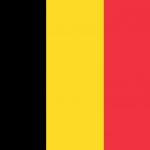
Dry periods in Belgium
1921, 1949, 1976, 1953 and 1956
Dry periods in Germany
1959, 1976, 2003, 2018
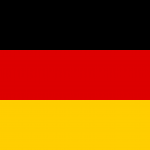
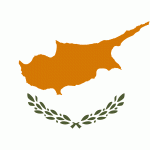
Dry periods in Cyprus
1990 – 1991, 1996 – 2000, 2006 – 2009,
2012 – 2016
Dry periods in Italy
1942 – 1950, 1988 – 1992, 1997 – 2001,
2003, 2007, 2012, 2017
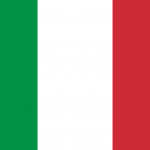
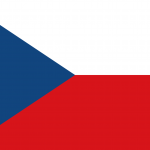
Dry periods since in the Czech Republic
1904, 1911, 1917, 1921, 1947, 1953 (1954),
1959, 1992, 2000, 2003, 2007
Dry periods in Spain
1909 – 1914, 1938 – 1939, 1941 – 1945,
1963 – 1964, 1979 – 1984, 1990 – 1995,
2005 – 2009, 2012 and 2017
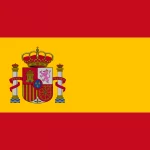
The effects of climate change have a greater impact on agriculture. The rising temperatures, decrease in precipitation and its greater irregularity, the increase in evapotranspiration, the lengthening of dry and very dry periods (longer summers), the temporary decrease in available water reserves and the proliferation of new pests and other phenomena closely related to climate change, they will have negative effects on agriculture and livestock farming in the coming years.
Due to several factors, water in the soil is less accessible for many crops during the growing season. For example, other spatiotemporal distribution of precipitation, related to soil moisture or increased evapotranspiration.
The development of precipitation extremes – storms and hails are a big problem that directly affects agriculture (can be derived from the data of insurance companies that pay compensation for damage caused by hail).
The growing season, its length, and onset change. Invasive diseases and pests move to higher altitudes and reproduce more generations. In recent years, there are periods when even steppe crops (cereals) face water shortages, so it is not just a matter of fruit-growing.
Drought has historically caused famines and massive migratory movements and has been the reason for severe economic, social and political crises. In fact, the impacts of drought are considered to be greater than those of any other natural disaster. They mainly affect agriculture, forestry, transport, recreation, tourism and energy sectors, and create a range of social impacts.
Wilhite, (ed.), 2005 lists the following four types of droughts and their consequences:
Negative deviation of precipitation from normal during a certain period of time. The dry air associated with a decrease in humidity together with higher air temperature has a negative effect on humans, fauna, and flora):
Soil drought, lack of moisture for crops:
Significant reduction of watercourse levels, the sinking of groundwater levels:
Effects of drought on quality of life:
Negative deviation of precipitation from normal during a certain period of time. The dry air associated with a decrease in humidity together with higher air temperature has a negative effect on humans, fauna, and flora):
Soil drought, lack of moisture for crops:
Significant reduction of watercourse levels, the sinking of groundwater levels:
Effects of drought on quality of life:
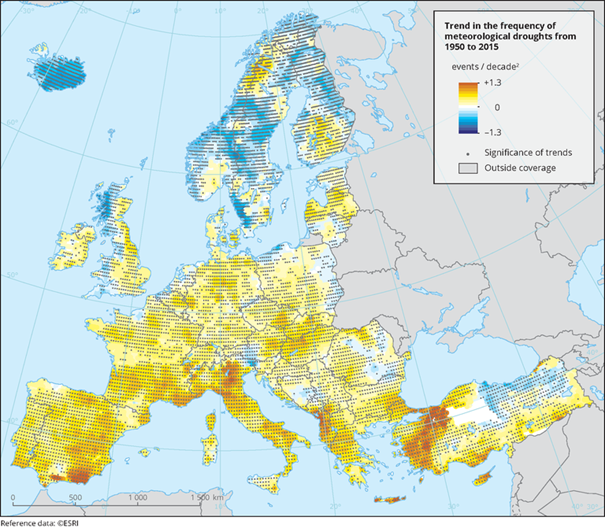
The problems caused by drought and climate change, in general, are linked to the vitality of agricultural crops and the increasing need for additional irrigation. It has many different aspects from sources of irrigation water, suitable methods of irrigation to the suitable and efficient distribution of water.
There is no use of intermediate crops – low-volume feed, often out of fear that the drought will cause a subsequent crop failure of major crops. The problem is, of course, the lack of water for cattle or poor harvests, when the rain does not come at the time when it is most needed.
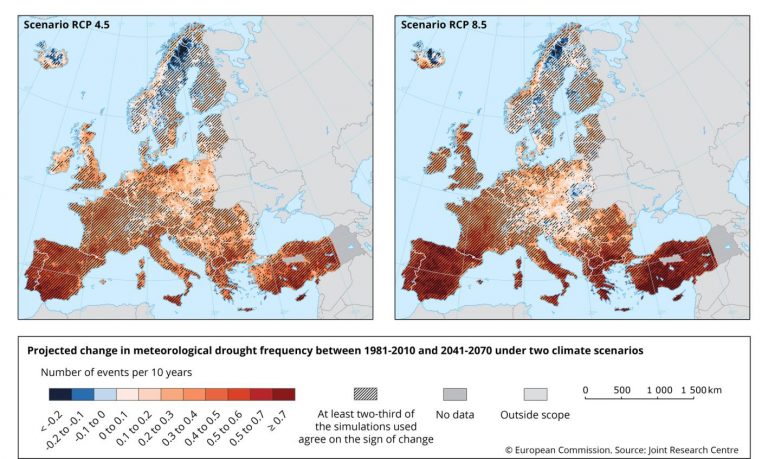
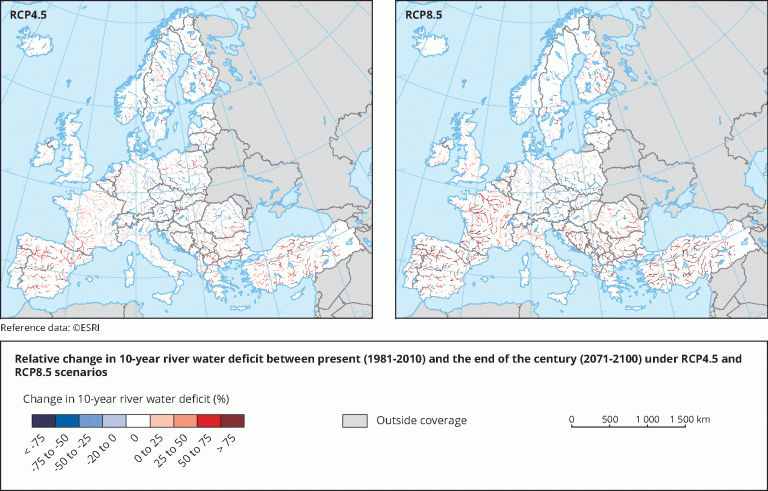
Agriculture is not just about growing field crops, but the effects of the drought are also on other related sectors, such as livestock production. In recent years, there has been a great shortage of feed (fodder). The feed is more expensive if it is at all and there is not enough water for farm animals.
Climate change is currently occurring and of course, there is an impact on agriculture and the existing farming systems. As farming is based on soil, water and sun, changes in these factors affect farmers. All three factors are changing not only on average but as well they are more and more volatile with even more regional differences than already before.
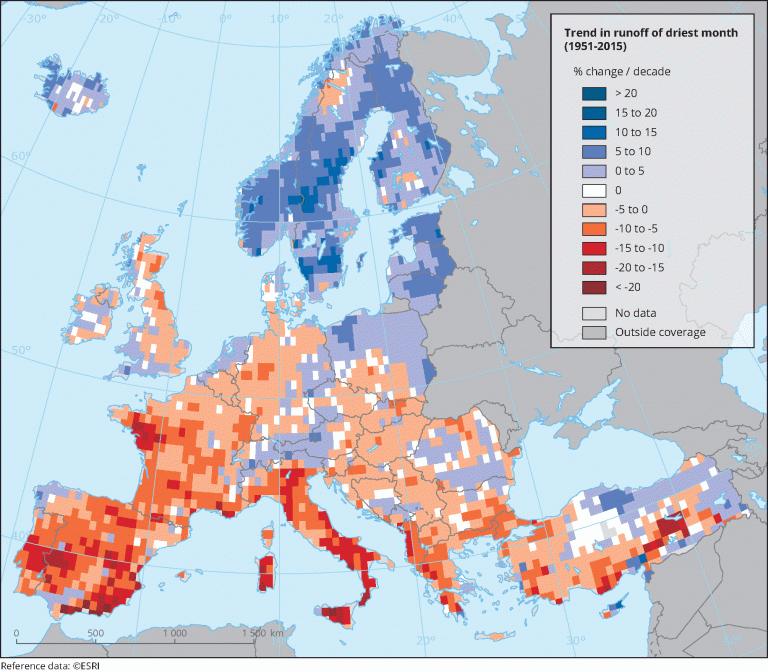
The following additional impacts can be mentioned:
The main observatory monitoring drought are:

In Belgium due to the multitude of governmental levels, there is no one singular organization that is responsible for droughts on a national level, rather this responsibility falls onto the shoulders of the many provinces, regions, and municipalities within the country. Therefore, there are many publics as well as private observatories that study droughts, including the Flemish Drought Commission, the Coordination Committee on Integrated Water Policy (CIW), and the Flemish Environment Agency (VMM). CIW is responsible for the coordination of the integrated water policy on the level ofthe Flemish Region.

In Cyprus are two Departments that observe the situation of droughts, namely the Water Development Department (WDD) and the Department of Meteorology. The WDD does not “monitor” or “study” the situation regarding droughts, i.e., it is not an “observer”, but deals with the management of the effects of the drought. In other words, it is called upon to manage the results from the drought phenomena, in terms of the management and distribution of the available water resources. This work is done using the Drought Management Plan as well as other relevant water management information.

In the Czech Republic is the Czech Hydrometeorological Institute, v.v.i., which measures air temperatures, precipitation, evaporation, and other meteorological parameters in its network of meteorological stations, distributed throughout the Czech Republic. Another Czech observatory is the Institute for Global Change Research of the AV ČR, v.v.i. – CzechGlobe, which is engaged in basic research on ongoing global climate change.

In Germany, the Federal Environment Agency (Umweltbundesamt: UBA) is collecting data on the state of the environment, researching interrelationships, making forecasts for the future and using this knowledge to advise the federal government. In addition, UBA enforces environmental laws. UBA’s tasks are defined in the Act on the Establishment of a Federal Environment Agency. Another institution The Helmholtz Centre for Environmental Research (UFZ) for Drought Monitor provides daily area-wide information on soil moisture conditions in Germany. The German Weather Service (DWD) is responsible for meeting the meteorological needs of all economic and social sectorsin Germany. Its tasks are based on statutory information and research mandate, the Law on the German Meteorological Service.

In Italy exists Drought Observatory CNR IBE Climate of the National Research Council – Institute of Bioeconomy (CNR-IBE). It provides operational services for decision makers, water management authorities and stakeholders. The Higher Institute for Environmental Protection and Research (ISPRA) is an Italian public research body and subject to the supervision of the Ministry of ecological transition. It publishes report and bulletin on drought conditions in Italy. Also, there are other three organizations that are dealing with drought: River Basin District Authorities, the Reclamation Consortium and Euro-Mediterranean Centre for Climate Change.

In Spain is National Drought Observatory (ONS) which aims is to bring together all the Spanish water
administrations with competencies in water matters, to constitute a centre for knowledge, anticipation and monitoring of the effects of drought in the country and to mitigate its consequences in the environmental, social and economic fields. The Observatory has a Committee of Experts on Drought, which evaluates the water scarcity situation and advises the Ministry on the actions to be taken to manage the drought.

There is no study or periodic report that encompasses all of Belgium. There are studies that have been done for specific regions.

Drought Management Plans make a decisive contribution to effective, efficient, and sustainable water
management and are therefore an integral part of the Water Policy. In the case of Cyprus, a country plagued by frequent and prolonged droughts, policy to address and effectively manage drought is the most important part of Water Policy (Water Development Department, Drought indices). Drought Management
Plans aim at the quantification and timely diagnosis of drought as well as the effective management and reduction of its adverse effects.

The CzechGlobe organization on the INTERSUCHO website deals with most aspects of drought and regular monitoring of the development of drought in the growing season in individual years and also in connection with individual years. Regular annual reports, the so-called Blue Report, are available on the website of the Ministry of Agriculture (eAGri), which contains data and information on water management in the Czech Republic. There are regularly published reports on the website of the Ministry of the Environment – Environmental Reports of the Czech Republic. There are available data on the state of the climate in a given year, the occurrence of drought, the climate system in the global system, or greenhouse gas emissions. Regular annual reports are published by all public research institutions (v.v.i.) and there can be found all projects dealing with drought, the results achieved, and new findings.

In Germany, The Helmholtz Centre for Environmental Research (UFZ) for Drought Monitor provides daily area-wide information on soil moisture conditions in Germany. It is based on simulations with the mesoscale hydrological model mHM developed at the UFZ.

The Higher Institute for Environmental Protection and Research publishes Drought bulletin which provides monthly-updated maps of SPI, computed for 3-, 6-, 12- and 24-month timescales over four areas: Italy, Europe, Mediterranean basin and EU CADSES area. The SPI calculation is based on daily precipitation data from the NCEP/DOE Reanalysis 1 project, which are freely-available only from 1948 to the present.


Precipitation over Europe as a whole does not show a significant trend, neither for annual nor for seasonal values. There is spatial variation in trends across Europe, though this is not explored further here.
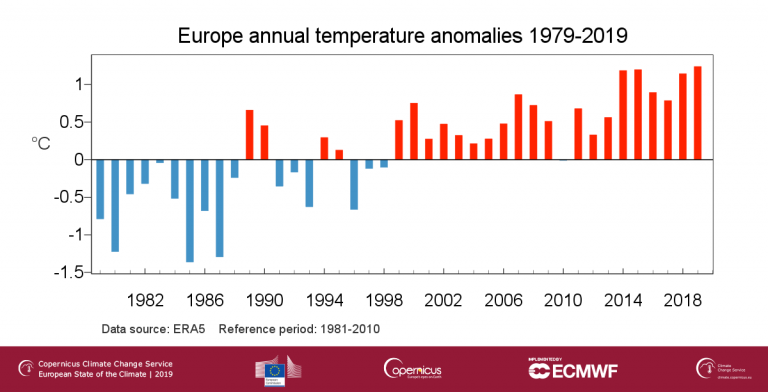
Temperatures over Europe show long-term warming trends since 1979 for both the annual and seasonal averages, though the rate of change and the time at which a clear trend emerges differ for the different time periods. The annual mean temperature shows that 2019 was the warmest on record for the ERA5 dataset, at over 1.2°C above average, but closely followed by 2014, 2015 and 2018. According to ERA5, 11 of the 12 warmest years in Europe have occurred since 2000.


Water scarcity in Cyprus is already aggravated by the impact of climate change. The effect started to be felt as early as the 1970s, with increasing rainfall variability and frequency of droughts. Statistical analysis shows a 20 percent drop in the mean annual precipitation since the early 1970s, compared to precipitation records over the past 100 years. While the mean annual precipitation over a 30-year period of the last century (1901–30) amounts to 559 mm, it has dropped down to only 463 mm during the past 30-year period (1971–2000). This reduction in rainfall has been accompanied by a parallel increase in average temperature, with a parallel negative impact on evapotranspiration in agriculture (with higher crops consumption).


The Mediterranean area is considered a hotspot for climate change. An increasing trend in temperatures started to be observed in Italy since the 80’s considering the annual averages, but even more when considering only the summer season, which extended its duration with increased heat waves spanning from May to October. The analysis of historical precipitation trends shows a higher variability, typical of areas with a complex orography like Italy, but overall, no significant trends are clearly observed (ISPRA, 2013; Toreti et al., 2009).

Water plays a crucial role in food production and agriculture in general. The major reason for water uses in the agricultural sector is crop irrigation. Based on the annual average, agriculture accounts for 59 % of total water use in Europe, most of which is used in the southern basins where precipitation and soil moisture are not sufficient to satisfy crop water needs and production of some crop types would not be possible without irrigation. Irrigation is also used to increase crop yields. In general, vegetables and other crops that generate high gross value added are also very water demanding.
Around 7-8% of the total agricultural area in Europe is irrigated, reaching 15% in southern Europe (source: Eurostat). Although only a small proportion of agricultural land is irrigated, around 40-45% of total water use in Europe is allocated to crop irrigation annually. Crop irrigation is particularly intensive (80% of total water use in southern Europe) between April and August, when crops grow, precipitation decreases and evapotranspiration increases.
Southern Europe uses around 95% of the total volume of irrigation water at the European level (including Turkey and the Western Balkans).
The agricultural sector generated more gross value added (20%) in 2017 than in 1995. However, there is still room for improvement in irrigation efficiency. In many cases, water is abstracted off-stream and conveyed over long distances, via open channels, ditches or pipes, to supply water for irrigation. During this transportation, a portion of the water is lost via evaporation or leakages in the conveyance systems (resulting in a decrease in irrigation efficiency). No comprehensive data are available to undertake a review of European irrigation efficiency although some literature suggests that irrigation efficiency is between 50 and 70% (Clemente at al., 2013; Baldock et al., 2000; Brouwer at al., 1989).
Crop patterns also determine the amount of water needed for irrigation. Favouring crop types with higher gross value added, but which are also more water-demanding, such as citrus fruits and energy crops, puts pressure on water resources. In the coming years, a slight increase in the water requirement for irrigation (EEA, 2014a), associated with a decrease in precipitation in southern Europe (EEA, 2015b) and the lengthening of the thermal growing season, may be expected.


The massive development of nonconventional water resources ‒ namely desalination (with an installed capacity in 2016 of 80 million cubic meters) and wastewater reuse (21 million cubic meters in 2015) ‒ in order to substitute for overexploited groundwater is obviously of crucial importance and impact. However, additional measures are needed to control abstraction from private boreholes, which for irrigation alone was estimated at 74 million cubic meters (year without restriction).


Farmers are very dependent on the weather in their business. In principle, this is not a problem, because fluctuations in yields due to weather conditions usually even out over the years. However, due to the extreme structural change in agriculture, the globalisation of markets and the related intense price war, many farms have been working at the very limits of profitability for many years.

The agricultural sector is responsible for more than the 50% of the total water consumption (ISTAT, 2019). In 2016, the 42.9% of farms (572,000) were equipped with irrigation facilities, for a total area of 4.1 million hectares. Compared to 1982, it increased by 4.2%. The 85.8% of the farms equipped with irrigation facilities effectively practiced irrigation in 2016, for a total area of 2.5 million hectares. In Italy, the 20.3% of agricultural land is irrigated, being one of the highest percentages among EU countries (ISTAT, 2019). In 2010, the total volume of irrigation water amounted to 11,618 million of m3, that is equal to an average of 4,666 m3 for each irrigated hectare (ISTAT, 2014).

According to the Survey on Crop Areas and Yields of the Ministry of Agriculture, Fisheries and Food (MAPA) in 2018, irrigated area reached 3,774,286 hectares, 399,654 more than ten years earlier. This increase has gone hand in hand with a decreasing trend in water consumption. Between 2008 and 2012, the volume consumed by farmers was close to or exceeded 16,000 cubic hectometres, while now it is below 15,000 hectometres, according to information from the National Institute of Statistics. The Ministry of Agriculture points in the same direction. In 2002, the agricultural sector accounted for 80% of the total water consumed in Spain. Today, this figure has fallen to approximately 65%.
Agriculture is the sector that will be most negatively affected by climate change. Besides increased temperatures and decreased rainfall, another significant negative impact is related to rainfall events that will occur with increased intensity, causing direct damages to infrastructures and crops and erosion of the most fertile soil layers.
The rise in temperatures will increase evapotranspiration and consequently crop water requirements, which in many cases can be satisfied only by practicing irrigation.
As water/irrigation is regulated at Länder level subsidies for public support directly related to water/water management are based more on Länder level. End of 2020 in Bavaria, the Ministry of the Environment’s funding programme for innovative environmentally sound and large-scale irrigation concepts in agriculture was entering the next round: the Bavarian-wide application process for up to three pilot projects, whose implementation will be financially supported by the ministry.
In some of the partnership´s countries are already prepared programmes that support the projects and initiatives focused on good water management. But we can say these programmes are quite unusual and hopefully in the future we will see more of this kind of “motivating” programmes.

The Vlaamse Landmaatschappij (VLM) has a programme called ‘Beheersovereenkomsten’, which is mainly dedicated to water quality and nature conservation. On top of this, there is also a project that gives financial compensation for measures by farmers to keep water on their land by stowage, but it is not widely used.

The Good Agricultural and Environmental Conditions is a set of measures under Cross Compliance of the RDP, through which farmers receive direct payments if comply with these conditions.



An overview of the basic and most important legal acts and regulations concerning water management as well as national strategies in partner countries can be found below. We can conclude that the majority of partnership countries already have implemented strategies supporting keeping water in the landscape and these strategies are the starting point for the further steps.

The heavily fragmented nature of the Belgian policy sphere has resulted in a complex, interconnected and dynamic network of policies and legislation. For this reason, there is no one policy/legislation that looks after drought and water management. Every jurisdictional level implements policies based on their own discretion and their own interests.
National adaptation strategy
The National adaptation strategy was adopted by the National Climate Commission in December 2010. It describes the main impacts of climate change in Belgium and the existing adaptation measures. It pursues 3 main objectives:
National adaptation plan
To do this, the Strategy sets out a roadmap for the development of this National plan for the end of 2012. Given that all the information necessary for its drafting (impact analyses, draft regional and federal adaptation plans ) was not available in 2012, its finalization was postponed, which also made it possible to take better account of the European Adaptation Strategy.
The National Adaptation Plan, drawn up by the “adaptation” working group of the National Climate Commission, was adopted on April 19, 2017 by the National Climate Commission.
In accordance with the decision of the National Climate Commission of June 27, 2013, this plan aims to:

Water Management related legislation is quite wide in Cyprus:
Drought Management Plans aim at the quantification and timely diagnosis of drought as well as the effective management and reduction of its adverse effects. Drought quantification concerns:

Legislative background in the Czech Republic relating to water:
In 2015, the government adopted the so-called National Action Plan with Fight Against Drought Combat/Adaptation Measures. This material seems to have moved from a general list to more specific topics, steps and activities. The topic is interdepartmental, dozens of experts and institutions comment on the issue and submit proposals, so activities are moving forward at the pace that can be expected in the Czech Republic.

In Germany, the most important legislative acts are:
There is no specific national strategy in Germany, but it is more or less prominently included in the monitoring of the annual climate protection reports.

The most important legislative acts regulating water are following:
Unfortunately, it can be affirmed that the management of drought in Italy has been based mostly as an emergency rather than on prevention. One of the first legislative instruments has been the DPCM n. 4 March 1996, followed by the Document the Prime Minister Romano Prodi circulated on the 13th of March 2007, in order to address the issue of drought in Italy and adopt subsequent measures. Another important step has been the establishment of a National Committee to fight against Drought and Desertification, fostered by the Ministry of Environment in 1999 under the auspices of the UNCCD, with relative Action Plans. Two other important documents are the Communication from the Commission to the European Parliament and the Council of July 18, 2007 and the Resolution of the European Parliament of October 9, 2008 on addressing the challenge of water scarcity and droughts in the EU. Recently the Ministry of Agriculture has been involved in an International Program launched by FAO, the WASAG Program, aimed at addressing the issue of Water Scarcity on Agriculture.
The Ministry for Environment, Land and Sea Protection (MATTM) started two initiatives to tackle drought:
The Ministry of Agricultural, Food and Forestry Policies (MIPAAF) in (2020) announced the implementation of a National strategy for water saving and hydrogeological instability.
The Ministry of Infrastructure and Transport (MIT) adopted in 2019 the National Plan of Interventions in the Water Sector – “Reservoirs”.

Spain was a pioneer in water regulation (Water Law from 1879, Hydrographical Confederations from 1926).
The main current water legislation in Spain:
The national plans and programmes related to climate change and drought develop several functionalities. They range from the consultative sphere for evaluation and planning to the existence of national framework plans.
Training needs for a better water management
Each of the partner countries differs greatly in the level of water management programs offered. Some of the partner countries already offer a system of programmes and subjects dealing with this issue, while other countries are at the beginning and do not include water management in their curricula. other countries are at the beginning and water management issues in the curriculum we cannot find.

There are no official training courses or education programmes in water management. They may be a part of University courses.

Apart from the above, the Department of Agriculture (DoA) and other departments of the Ministry of Agriculture, Rural Development and Environment organise educational lectures for farmers, related to water management and water saving. An example is the participation of farmers in Schemes 6.1 ”Support for the first establishment of young farmers“ and 4.1 ”Investments that improve the overall performance and viability of farms“ of the Rural Development Program 2014‒2020. The DoA is obliged to train farmers who have been approved in these schemes.





Due to Belgium’s heavily divided and fragmented jurisdictions, there are no specific national level studies that examine the effects of droughts across the entire country. However, on more provincial, regional, and municipal levels, there are studies that examine droughts. Indeed, the region of Flanders is currently developing such a plan, as well as the province of Limburg has already produced a drought-specific study for its area. (Meuris, 2020)
Such studies are either performed by the jurisdictional body (municipality, province, or region) on behalf of institutes, or they hire private companies to perform such studies for more accurate policy action. Indeed, water and waste-water companies perform their own studies in regards to water management and how it is affected by previous, ongoing, and future droughts.
On top of this, federal departments in Belgium work on this issue as well, most notably the Department of Environment, which publishes their annual environmental report, which is seeing an increase in drought-related and water management content.
Finally, there are multiple NGOs that also work alongside these governmental bodies on drought-related studies, either through receiving financial aid or working alongside governmental experts. (Meuris, 2020)

The research work of Natural Resources and Environment section of ARI (Natural Recourses and Environment section, n.d.) over time, concerned irrigation and fertilization of crops, soil fertility, the application of new technologies in greenhouses, the use of treated wastewater for irrigation and the use of renewable energy in agriculture. Methods and techniques that have already promoted to farmers in the field of irrigation/fertilization are the most widely applied. The results of limited irrigation are especially useful in periods of drought when irrigation must be restricted. Noteworthy, the long-term research data of the section enabled the acceptance of treated wastewater reuse for irrigation, while also formed the basis for the legislative framework.
An important part of the research work is being carried out within the framework of competitive programmes (partners or lead partner) from various funding agencies, such as the European Union, and the Research and Innovation Foundation of Cyprus.
The ARI has developed an online tool for the calculation of monthly water needs (m3/decare) per location and crop in Cyprus (Natural Resources and Environment section, n.d.). The open access ARI tool facilitates the sustainable use of water by farmers via making sound decisions on irrigation scheduling. In this sense, drought stress and reduced crop productivity impacts of climate changes on study crops can be mitigated

Solved research projects focusing on the issue of drought can be found on the specialized website after entering the keyword “drought”. On the list we can found 86 supported projects dealing with issue water, water management and drought. Here is a selection of interesting ones:

Six organizations from climate research and science-based climate communication – German Climate Consortium, German Meteorological Society, German Weather Service, Extreme Weather Congress Hamburg, Helmholtz Climate Initiative, klimafakten.de – have thus summarised the most important scientific findings on climate change. The fact paper with four chapters proves that the current global warming of about 1 degree compared to pre-industrial times is a fact and human activity is the main reason.
Despite 30 years of international climate policy, more and more greenhouse gases continue to accumulate in the atmosphere and intensify climate change – even the Corona Lockdown has not changed this. What is needed are lasting and profound structural changes in all areas of society – from the energy system to land use and infrastructure, as outlined in the Intergovernmental Panel on Climate Change’s Special Report on 1.5 degrees Celsius Global Warming. The later these changes begin, the more difficult it will be to slow climate change and avoid irreversible changes. The massive funding that needs to be invested to address the Corona crisis is an opportunity to start these structural changes now.

Since the Italian University system is mostly based on multi-disciplinary Universities (unlike, for example, the Dutch system, with specialized Universities for each topic) researchers of the mentioned sectors are present in almost every institution across the country.
Researchers in the sector are active in different scientific associations, namely:
All the associations held national conferences where drought-related problems are considered as one of the main topics.
The main Academic conferences dealing with irrigation can be considered:


In Flanders there is a programme called Water-Land-Schap and aims to solve water problems in rural areas in close collaboration with farmers, businesses, residents and landscape managers. The intended outcome of the programme is to have stronger agriculture, a sustainable water supply, good water quality, a collection of excess water in both the built environment and natural systems and a stronger landscape in the area.
In Waasland situated in East Flanders the ‘Barbierbeek connects’ project aims to construct buffer zones along the Barbierbeek working together with farmers and finding solutions to their water management problems.

MED Greenhouses. The objective was to improve eco-innovation capacities of public and private actors in the greenhouse/agriculture sector through stronger transnational cooperation, knowledge transfer and better networks between research bodies, businesses, public authorities, and civil societies.
ORGANIKO LIFE +. The project has a duration of 4 years (2015-2019). The goal of the project was to demonstrate the comparative advantages of organic versus conventional farming and products using indicators of mitigation efficiency to climate change, agronomic and environmental quality, reducing/decreasing children‘s exposure to pesticides in diet, and healthy food promotion for better children’s health (ORGANIKO Life, 2015-2019).
Adapt2Change LIFE+. Adapt agricultural production to climate change and limited water supply. The project started in 2010 with a duration of 72 months. The main objectives were to minimize freshwater use for agricultural production and introduce water-recycling method in a close greenhouse system.;
ERANETMED- CrITERIA. Aimed to assist water resources management organizations and water users on decision making when coping with water scarcity, climate change and polluted water.
SWOSOIP. Smart Watering System for Optimizing Irrigation Process. The research project, funded by the European Space Agency, concerns the creation of a smart water meter that will receive data from satellites for automatic irrigation of certain crops and will be piloted in the area of Achelia in Paphos.

Major projects which are considered that should be mentioned, but there are many more other relevant projects focusing on better water management in agriculture:



As shown in “Institutions, levels, courses which are addressing water management”, there are several running projects about water management in agriculture, such as the National Irrigation Observatory, the National Centre for Irrigation Technology (CENTER) or the Agroclimatic Information System for Irrigation (SIAR).
Challenges and prospects for change in the future for farmers
The farmer has a far greater role than is attributed to him in the fight against drought. The main challenge for farmers is:
Farmers are faced with challenges due to climate change. There may be some positive aspects as the other side of the coin, but the problems seem to have far more weight.
Climate change brings with it the increasing risk of yield losses due to drought stress or extreme events such as storms, heavy rain, hail and floods.
More and more in the future drought might be the cause of social turmoil and political instability, if not properly addressed, besides bringing serious economic problems to rural communities, but not only to these.
Under a climate scenario of increasing temperature up to 3 °C by 2100, it is estimated that drought economic losses could be 5 times higher compared to the present (Cammalleri et al., 2020). Considering ecosystem services losses, difficult to be monetized, losses could increase even more.
In summary, it can be stated that a major challenge for the state and farmers will be to compare the costs and benefits of production (crop yield) and non-production landscape functions (soil quality, water, drought, floods), especially in the long-term perspective. Although the landscape must produce (raw materials, food, energy, wood…), it must also guarantee non-productive functions – biodiversity, soil protection, water protection, or drought-resistant function. At a time when one-sided pressure is only on production, the condition of the soil, vegetation, and water supply is unsustainable. However, it is not even possible to focus unilaterally only on non-productive functions, because then we will lose competitiveness in agriculture.

AGRIWATER project has been funded with the support from the European Commission, with the reference number 2020-1-CZ01-KA204-078212. The content of this website reflects the views only of the author, and the Commission cannot be held responsible for any use which may be made of the information contained therein.
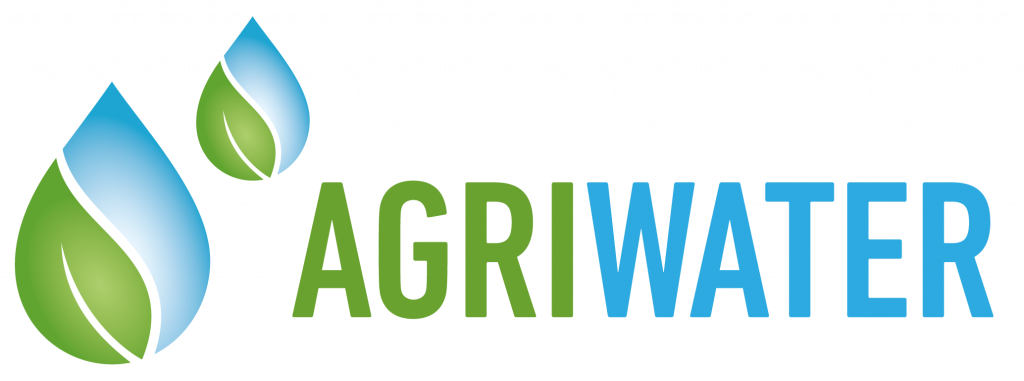
At AGRIWATER we take the protection of your personal data very seriously. Our purpose is to protect the privacy of the data you provide us and to comply with the current regulations on the protection of personal data.
In compliance with the Act 3/2018 of 5 December on the Protection of Personal Data and Guarantee of Digital Rights transposing Regulation (EU) 2016/679, we inform you of the following information about our privacy and data protection policy:
The organization responsible of your data is Asociace soukromeho zemedelstvi Ceske republiky, ID E10133738. This is a non-governmental organization located in Prague, Czech Republic.
Address
Samcova 1177/1
11000
Praha 1
Telephone
+420266710413
+420266710414
Email contact
marketa.sandova@asz.cz
The legal basis for the treatment of your data is the consent of the data subject under article 6.1 a) of the Regulation, as well as the legitimate interest of the data controller under article 6.1 f) of the Regulation.
The data we request from you are adequate, relevant and strictly necessary and in no case are you obliged to provide them to us, but their non-communication may affect the purpose of the service or the impossibility of providing it.
Your data will be kept for the time required for the proper provision of the service offered, as well as to meet the responsibilities that may arise from it and any other legal requirement.
In the course of processing your data, Asociace soukromeho zemedelstvi Ceske republiky may share your data with:
On Projects Advising SL, as web management and maintenance service providers.
The controller retains the right to restrict the rights set forth in Article 23 of the EU Regulation, if such restriction is provided to safeguard, in particular fundamental rights and freedoms and is a necessary and proportionate measure.
If any interested party considers that their data are not being treated correctly, they can send their complaints to the following e-mail address; kristyna.strnadova@asz.cz, Asociace soukromeho zemedelstvi Ceske republiky.
The data subject declares to have acquired all this information.

A cookie is a file that is downloaded and executed on your computer, phone, or mobile device when you access certain web pages. Cookies allow a website, among other things, to store and retrieve information about user’s browsing habits and recognize the user depending on the information they contain and the way they use their computer.
Cookies do not harm your computer and are necessary to facilitate navigation.
Cookies are necessary for our website to work properly. The purpose of our cookies is to improve the user’s browsing experience. They can be used to remember your preferences (language, country, etc.) during navigation and on future visits.
The information collected in the Cookies also allows us to improve the website and adapt it to the individual interests of users, speed up searches, etc.
Analysis Cookies: These, if they are used properly by us or by third parties, allow us to quantify the number of users and thus perform the measurement and statistical analysis regarding the users’ usage of our service.
Advertising Cookies: These, if they are used properly by us or by third parties, allow us to manage as effectively as possible the supply of advertising space on the website, adapting the content of the advertisement to the content of the service requested or to the use you make of our website.
Our cookies do not store information about your personal identification, address, password, credit or debit card details, etc.
The information stored in the website’s cookies is used exclusively by us, apart from those identified below as “third party cookies”, which are used and managed by external entities to provide us with services to improve our own services and the user’s experience when browsing our website.
Third party cookies are mainly used to obtain statistics and to guarantee the payment operations are carried out.
Yes, firstly, you must disable cookies in your browser and, secondly, delete the cookies stored in your browser associated with this website.
You can restrict, block, or delete cookies from this website at any time by modifying your browser settings. This setting is different for each browser. For more details on the configuration of cookies in your browser, please consult your browser’s “Help” menu.
It is possible that some of the website’s features may no longer work if you disable cookies.
These Cookies are used to identify the user during the session, prevent the user from having to repeat authentication processes on the website, speed up some website processes, remember selections made during the session or on subsequent accesses, remember pages already visited, etc.
COOKIES
PURPOSE
DURATION
MANAGEMENT
User identification
They are used to identify and authenticate the user. They also contain technical data from the user session, such as connection timeout, session identifier, etc.
Session
AGRIWATER
Session identification
They identify the user’s http session. They are common in all web applications to identify requests from a user’s session.
Session
AGRIWATER
Navigation status
They help identify the user’s browsing status (login, first page, first access, scroll status, voting status, etc.).
Session
AGRIWATER
These Cookies obtain generic information about users’ accesses to the website (not the content of the same) to subsequently provide us with information about these accesses for statistical purposes.
COOKIES
PURPOSE
DURATION
MANAGEMENT
Google Analytics (__utma, __utmb, __utmc, __utmd, __utmv, __utmz, _ga…)
They allow website statistic’s tracking through the Google Analytics tool, which is a service provided by Google to obtain information about user access to websites. Some of the data stored is: number of times a user visits the website, dates of the user’s first and last visit, duration of visits, from which page the user accessed the website, which search engine was used or which link was clicked, from which part of the world the user accessed the website, etc. The information generated by the cookie about your use of the website will be directly transmitted and stored by Google Inc (a company located in United States). The configuration of these cookies is predetermined by the service offered by Google, so we suggest you consult the Google Analytics privacy page, for more information on the cookies it uses and how to disable them (keep in mind that we are not responsible for the content and accuracy of third-party websites).
Persistent
Third Parties